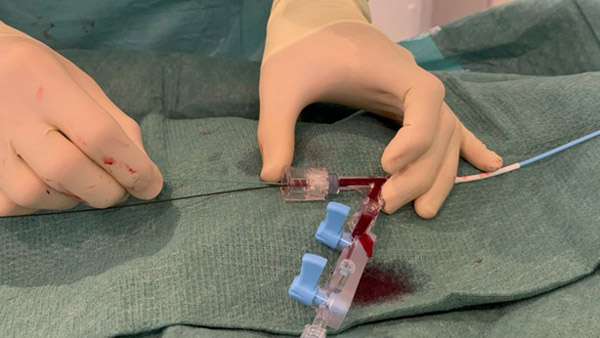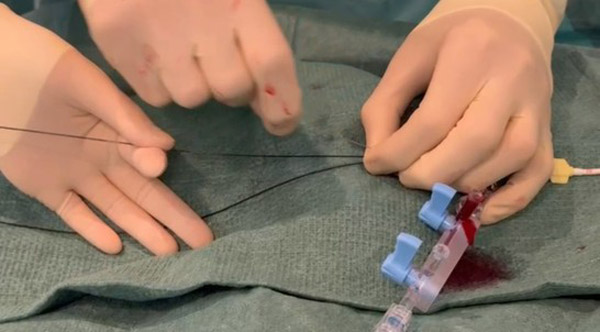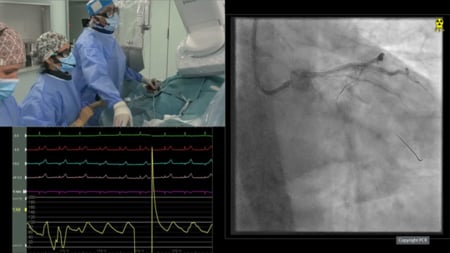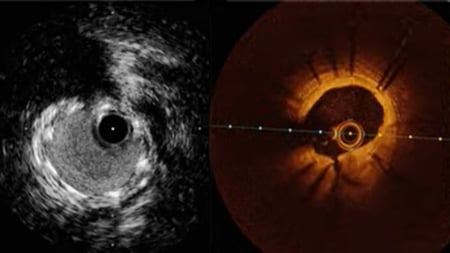10 Jul 2025
How to avoid using a new balloon for trapping?
A problem-solving step-by-step tutorial
Trapping wires during complex PCI is essential but dedicated trapping balloons aren’t always on hand — and costs add up fast. This My Toolkit tip shows you how to safely reuse a standard PTCA balloon by stiffening its shaft with the original stylet, making valve crossing easy and preventing kinking or damage.
Frequency of the problem:
Expert level:
Summary
Trapping techniques are often required during complex PCI procedures to exchange or remove microcatheters over short guidewires. While dedicated trapping balloons exist, many operators rely on reusing a previously inflated PTCA balloon.
However, advancing such a balloon through the hemostatic valve of the Y-connector can be challenging due to a lack of shaft support, frequently leading to kinking or even shaft fracture.
A simple and effective solution is to reuse the original stylet (the stiffening wire provided in the monorail lumen packaging) to reinforce the balloon shaft. By inserting the stylet in reverse—from the monorail exit port toward the tip—you can temporarily stiffen the balloon, facilitating safe and controlled advancement across the Y-connector.
The problem
Trapping is a widely and crucial used technique in complex PCI, particularly when exchanging microcatheters and retaining wire position with a short wire.
Although dedicated trapping devices are available, they are not universally stocked and can increase procedural costs. PTCA balloons are often employed as an alternative. However, the shaft of a monorail balloon becomes soft and prone to kinking, especially when no guidewire is present to provide internal support. Advancing this floppy shaft across the tight hemostatic valve of the Y-connector—particularly in crowded settings with 6 Fr guides, multiple wires, or guide extensions—can result in shaft damage or procedural delay.
Principal idea
Use the original stylet from the balloon packaging to straighten and reinforce the shaft. Insert it in reverse through the monorail lumen (from the proximal exit port toward the balloon tip). This adds the necessary pushability to cross the hemostatic valve safely.
Material needed
A standard rapid-exchange PTCA balloon. The original stylet (shaft stiffener) included in the balloon packaging. Keep the stylet readily available throughout the procedure if trapping might be needed.
Step-by-step method
Step 1
Remove the protective plastic sleeve usually attached to the stylet. Do not use the stylet as delivered—advance it from the proximal monorail port toward the balloon tip, in the opposite direction to usual wire insertion. Carefully insert the stylet into the rapid-exchange lumen to support and straighten the balloon shaft.
Step 2
Advance the balloon through the Y-connector's hemostatic valve, holding both the shaft and the stylet to maintain control.

Step 3
Once the balloon has crossed the valve, remove the stylet before advancing the balloon further along the guide catheter.

Points of specific attention
- Never insert the stylet from the distal tip, as it would prevent retrieval after valve crossing. Always insert from proximal to distal.
- Do not advance the full shaft with the stylet in place: remove it promptly after passing the valve to avoid entrapment or embolisation.
- Always remove the plastic sheath on the stylet before use.
- This technique is particularly helpful when re-using a balloon that has already been inflated and deformed.
A word from the reviewer - Alexander Völz
Trapping is an essential skill during microcatheter or wire exchange, specifically when working with short wires. While dedicated trapping balloons are available, they are rarely available in the lab, and can add unnecessary cost to the procedure. The use of extension guidewires may be a safe, easy alternative, but adds extra costs.
The technique of (re)using a standard PTCA balloon for a trapping maneuver by reinforcing the shaft with its original stylet is a simple yet elegant solution that addresses a common challenge in complex PCI. This stylet-reinforcement method can provide a reliable workaround, using tools already at hand.
From my point of view, the key to success lies in understanding the structural limitations of a used or even unused balloon shaft, particularly lacking internal wire support, and once it's been inflated. Inserting the stylet from the proximal monorail exit offers added pushability to safely cross the hemostatic valve, first and foremost in crowded 6 Fr guides, or when guide extensions are in place.
Importantly, even though this technique may not require special interventional skills, it does require attention to detail: as emphasised in the article, it must be removed promptly after crossing of the hemostatic valve. This could signify a possible pitfall, respectively an extra step that may, especially in stressful situations (we all know them), be forgotten, potentially implicating an added risk for the procedure.
Despite the extra-support offered by the inserted stylet, one should be aware that, even then, difficulties in advancing a used PTCA balloon in a crowded guide catheter may occur. For the sake of the safety of the procedure, when applying this elegant, cost-effective method, I would, if possible, recommend to use a „cheap“ but new, unused PTCA-balloon instead.
In summary, this practical, cost-conscious approach exemplifies the value of procedural adaptability in interventional cardiology and should be part of every operator’s toolkit when managing complex wire and catheter strategies.
Disclosures
The authors declare no conflicts of interest to disclose.
Authors









2 comments
Excellent explanation and Technology
Good idea!